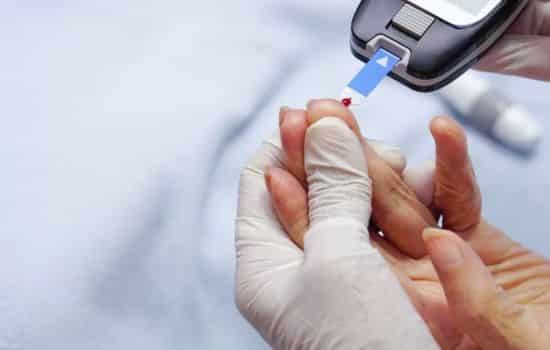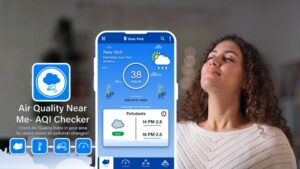Diabetes is a chronic disease that affects millions of people worldwide. It is characterized by high levels of glucose (sugar) in the blood, which can damage various organs and systems of the body if not properly controlled.
Glucose control is essential to avoid serious complications associated with diabetes, such as cardiovascular disease, kidney damage, and vision loss. Therefore, monitoring glucose levels is crucial, especially for those at risk of developing diabetes or who already have the disease.
Fortunately, today there are technological tools such as mobile applications that allow users to effectively monitor their glucose levels.
In this article, we will explore the risks of diabetes related to high glucose levels, how it can affect your health, and how an app like mySugr can help you control your glucose and prevent complications.
What is diabetes and how does it affect the body?
Diabetes is a metabolic disease in which the body either doesn't produce enough insulin or can't use it effectively. Insulin is a crucial hormone for regulating blood glucose levels. There are two main types of diabetes: type 1 and type 2, each with different causes and mechanisms.
1. Type 1 diabetes
Type 1 diabetes is an autoimmune disease in which the immune system attacks and destroys the cells in the pancreas that produce insulin. As a result, people with type 1 diabetes cannot produce insulin on their own and must receive insulin through injections or an insulin pump.
This type of diabetes usually develops in childhood or adolescence and requires constant monitoring of blood glucose levels.
2. Type 2 diabetes
Type 2 diabetes is the most common form of the disease and occurs primarily in adults, although it is also increasing in young people due to unhealthy lifestyle choices. In type 2 diabetes, the body doesn't use insulin efficiently, which is known as insulin resistance.
Initially, the pancreas produces more insulin to counteract this resistance, but over time, the pancreas's ability to produce insulin decreases. Type 2 diabetes can be managed with lifestyle changes, medications, and, in some cases, insulin.
Consequences of having high glucose levels
When blood glucose levels are too high for a long period of time, they can cause a series of serious complications affecting different organs and systems of the body. Below are some of the main consequences of high glucose levels:
1. Cardiovascular diseases
Poor glucose control can increase the risk of heart disease, such as heart attacks and strokes. High glucose damages blood vessels, contributing to the formation of fatty plaques in the arteries (atherosclerosis), which can narrow them and impair blood flow. This can increase blood pressure and put an additional strain on the heart.
2. Kidney damage (diabetic nephropathy)
The kidneys filter the blood to remove waste and excess water. High glucose can damage the small blood vessels in the kidneys, impairing their ability to effectively filter waste. Over time, this damage can lead to kidney failure, which may require dialysis or a kidney transplant.
3. Eye problems (diabetic retinopathy)
Diabetic retinopathy is a complication related to high glucose levels that damages the blood vessels in the retina, the part of the eye responsible for vision. This can cause vision loss and, in severe cases, blindness. It is important for people with diabetes to undergo regular eye exams to detect any early signs of eye damage.
4. Diabetic neuropathy
Diabetic neuropathy is nerve damage due to high blood glucose levels. This can cause pain, tingling, numbness, and weakness, primarily in the legs and feet. Neuropathy can also affect the digestive system, heart, and urinary system, increasing the risk of infections and other complications.
5. Skin problems
Diabetes can also affect the skin, causing dryness, frequent infections, and slow wound healing. People with diabetes are more likely to develop infections of the skin, gums, urinary tract, and other areas. Additionally, people with poorly controlled diabetes may be more susceptible to bacterial and fungal infections.
6. Increased risk of infections
The immune system of people with diabetes is less able to control infections, which increases the likelihood of developing illness. Furthermore, excess glucose in the blood promotes the growth of bacteria and fungi, making infections more frequent and difficult to treat.
- Apps to Detect Impurities in the Air
- Free Apps to Learn English
- Apps to Try Beard Styles
- The best music recognition apps
- Apps to Block Fraud Calls
How to control glucose levels?
Controlling glucose levels is essential to preventing diabetes complications and maintaining a good quality of life. Below are some key strategies for keeping glucose levels within healthy limits:
1. Regular glucose monitoring
One of the best ways to control glucose levels is to measure them regularly. Frequent monitoring allows you to detect fluctuations in glucose levels and take prompt action to correct them.
If you have diabetes, you should measure your glucose levels several times a day, especially before and after meals, and follow your doctor's recommendations.
2. Balanced diet
A healthy and balanced diet is key to controlling glucose levels. It's important to follow a diet rich in fruits, vegetables, lean proteins, and whole grains, while limiting consumption of foods high in sugars and refined carbohydrates. Portion control and healthy food choices also help maintain healthy glucose levels.
3. Regular exercise
Regular exercise helps improve insulin sensitivity and reduce blood glucose levels. Moderate physical activity, such as walking, swimming, or cycling, can be very beneficial for people with diabetes. Exercise also improves cardiovascular health and helps maintain a healthy body weight.
4. Medication
If your diabetes can't be controlled with lifestyle changes alone, your doctor may recommend medications to help regulate glucose levels. This may include oral medications or insulin, depending on the type of diabetes and the severity of the disease. It's important to follow your doctor's instructions and take your medication as prescribed.
How can mySugr help you control your glucose and diabetes
Technology has made diabetes management easier, and mobile apps have become essential tools for glucose monitoring.
One of the most popular and recommended applications to control diabetes is mySugr, a tool designed to help users keep detailed records of their glucose levels, diet, physical activity, and treatment.
Main features of mySugr
1. Easy recording of glucose levels
mySugr Allows you to easily record your glucose measurements, either manually or by syncing with compatible measuring devices. You can record glucose levels at different times of the day, such as before and after meals, helping you identify patterns and adjust your treatment accordingly.
2. Control of diet and physical activity
The app allows you to log what you eat and the activities you do, making it easier to monitor how these factors affect your glucose levels. By keeping a complete record of your diet and exercise, you can identify which foods or activities influence your blood sugar levels and make necessary adjustments.
3. Detailed charts and reports
mySugr It offers detailed graphs that allow you to visualize your progress over time. These reports are useful for spotting trends in your glucose levels and better understanding how your body responds to different treatments, foods, and activities. You can also share these reports with your doctor to adjust your treatment plan if necessary.
4. Reminders and alerts
The app includes reminder features so you don't forget to check your glucose, take your medication, or perform physical activities. These reminders help you maintain constant control over your health and ensure you're following a proper regimen to manage your diabetes.
5. Integration with other health devices
mySugr It's compatible with various glucose monitoring devices, making it easy to collect data automatically. If you already use a glucose meter or monitoring device, you can sync data to the app to keep track without having to enter values manually.
Benefits of using mySugr
1. Precise glucose control
mySugr It facilitates precise monitoring of glucose levels, helping you keep them within healthy ranges. Detailed recording and tracking of measurements allows for more effective management of your diabetes.
2. Better understanding of your health
Visualizing your data through graphs and reports helps you better understand how your habits and treatments affect your glucose. This allows you to make more informed decisions about your health and adjust your lifestyle effectively.
3. Constant motivation and support
Reminders and notifications from mySugr They keep you motivated and focused on your treatment. The app also offers tips and strategies to improve your glucose control, supporting you throughout the process.
4. Facilitates communication with your doctor
The ability to share your reports with your doctor makes treatment more collaborative and personalized. Healthcare professionals can use the app's data to adjust your medication and provide you with more precise recommendations.
Conclusion
Controlling glucose is crucial to preventing serious complications associated with diabetes and maintaining a good quality of life. Apps such as mySugr They offer an easy and effective way to track your glucose levels, diet, exercise, and medication.
With features like detailed logs, progress charts, reminders, and personalized analytics, mySugr provides you with the tools you need to take control of your health and prevent complications of diabetes.
If you want to manage your diabetes effectively and keep your glucose levels in healthy ranges, mySugr is an excellent option for you.






